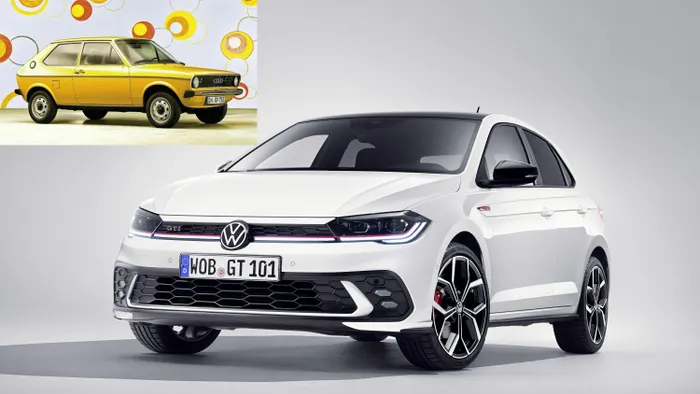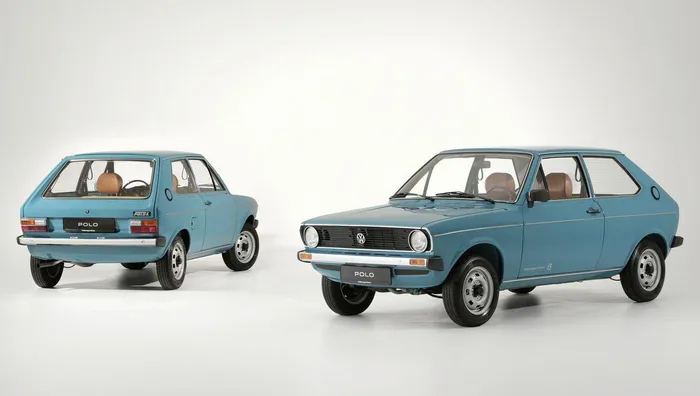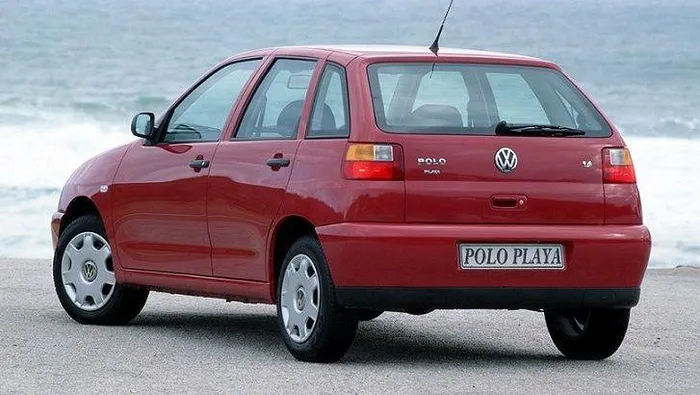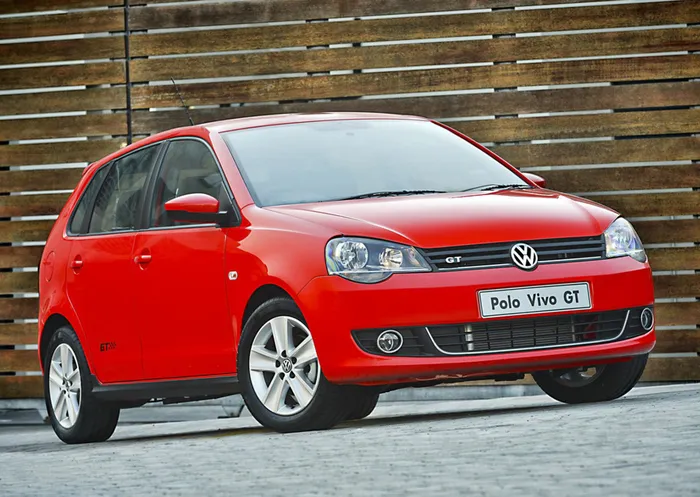
The first-generation Polo was based on the Audi 50 (left), itself an NSU product.
Image: Jason Woosey
The Volkswagen Polo is something of a legend in South Africa.
Despite the surging popularity of SUVs, the Polo Vivo was still Mzansi’s most popular passenger car in 2024, while the more expensive latest-generation Polo remains among the country’s most sought-after hatchbacks.
The Polo nameplate has only existed in South Africa for 29 years, and even that original model wasn’t actually a Polo, which we’ll get to later.
But in Europe the Polo recently celebrated its 50th anniversary, meaning it has been around for almost as long as the Golf.
In fact, the Polo was never originally meant to be a Volkswagen at all.
The first-generation Polo was designed by a German car company called NSU Motorenwerke, which was a specialist in motorcycles, small cars and, interestingly enough, was the original creator of the rotary engine. However, the latter’s unreliability and the resultant warranty claims nearly drove the company under, and in 1969, NSU was acquired by the Volkswagen Audi Group.
NSU’s experience in creating front-wheel drive cars was instrumental to Volkswagen, which was transitioning from rear-engined cars like the Type 3 and Beetle to its modern line-up. But with the Golf having become a key focus for the Wolfsburg-based brand, the small NSU-developed hatchback was passed on to Audi, which turned it into the Audi 50.

Volkswagen Polo MK1
Image: Supplied
Yet with the oil crisis in full swing in the early 1970s, Volkswagen couldn’t resist the prospect of having another small hatchback in its portfolio, and soon the Audi 50 was stripped down and rebadged as the Volkswagen Polo.
Before settling on its name, VW had toyed with other strange names such as Bonito and Mini Golf, Big Car reports.
Can you imagine trying to dice a Bonito GTI on Winnie Mandela Drive?
The Polo soldiered on in Europe through two generations, and strangely it was never offered in five-door guise until the third-gen arrived in 1994, although a sedan and three-door estate had been offered, the latter arriving with the second generation.

From left to right: the six generations of Volkswagen Polo.
Image: Supplied
South Africans only got their first taste of the Polo in 1996, with a variation of the third-generation model that was actually based on the VW-owned Spanish brand Seat’s Cordoba saloon. In fairness, the Seat-based Polo Classic was also offered in Europe, as a saloon version directly based on the Polo hatch was not deemed a worthwhile investment.
While the Polo Classic was earmarked for South Africa, as we were still very much a saloon-heavy market, VWSA soon realised it wanted a hatchback to slot between the ageing Citi Golf and the somewhat expensive Golf 3 of the time.

Volkswagen Polo Playa: a local creation.
Image: Supplied
In 1998, a locally flavoured icon was born, in the form of the Polo Playa.
Given that they’d already invested in the Polo Classic, which was also readily compatible with the locally produced Golf and Jetta engines, VWSA decided to create its own version of the Seat Cordoba’s hatchback sibling, the Ibiza. To do this they transplanted the front end of the Polo Classic onto the Ibiza's shell and adapted the rear tailgate to resemble the upcoming Golf 4. This entailed moving the number plate to the rear bumper. The taillight lenses were also a local design.
From 2002 onwards, South Africans were treated to the 'real' Volkswagen Polo. This is because VWSA was awarded a major export contract for the fourth-generation model.
This export success story still exists with the sixth-generation Polo, which has helped drive the Kariega-based manufacturer's annual volumes well beyond the 100,000 mark.
Although the Polo lost any form of South African uniqueness in its transition into an export product, the local flavour returned with the introduction of the Polo Vivo, which replaced the Citi Golf in 2010.
Introduced shortly after the fifth-generation entered production, the Polo Vivo was based on the recently discontinued fourth-generation model, allowing the company to create a more budget oriented product using tooling that had already been paid for and amortised.

The first-generation Polo Vivo was based on the MK4 Polo.
Image: Supplied
This saw the return of some local variations, such as the GTS as well as the ‘Citi’ edition later in its life cycle, taking its “red, yellow, blue” inspiration from the Citi Golf.
It was very much a case of rinse and repeat for the second-generation Polo Vivo of 2018, which utilised the fifth-generation Polo’s tooling after the sixth-gen was launched.
This Vivo is still in production today, and was recently given a locally-designed facelift in a bid to keep it fresh for years to come.
However, it appears that history won’t be repeating itself as VWSA’s CEO Martina Biene told the media last year that the current Polo won’t form the basis of a new Vivo model.
The future of the Volkswagen Polo also remains in jeopardy, with Volkswagen looking likely to discontinue it at the end of this decade.
Related Topics:
